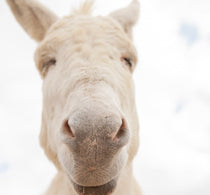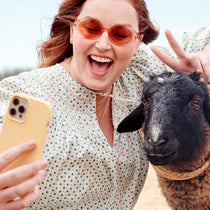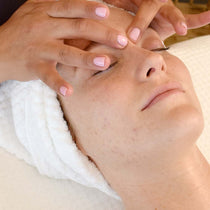Preparing for Bad Weather: Winter Storm Edition
Year round, we are constantly checking the weather. Is it hot enough that we need to keep fans in the stalls on in the afternoon? Is it going to rain for hours and we need to hang hay somewhere so that it won’t get wet? The biggest question we ask ourselves: how can we protect the vulnerable animals?

We have an array of animals with different health conditions and personalities, and refer to some of them as the vulnerables. Willow, on of our draft horses, for example, has a chronic health condition, but due to her large size we do not have to worry about her in a storm situation because she moves into a stall on her own and often prefers to stand on a hill with rain and wind blowing through her hair. On the other hand, Lucy is healthy, but very submissive due to only having sight in one eye, and can easily be “kicked out” of a stall by a more dominant horse. So we get creative when a storm is coming, drawing maps and making new stall configurations to make sure everyone has a safe space!!
All of our stalls have heaters for winter and fans for hot weather. Gil’s Barn is our newest barn. It has two stalls and an outdoor fenced-in area just for "the littles", that can be divided to have one group of goats or sheep on each side, or the gate can be left open so they have a larger area.

When a storm is coming, we create “Donkey Alley” to give them a place that is just for them. Using cattle panels and zipties, we fence in the concrete alleyway and our back barn - giving them access to a large open space and multiple stalls. Sometimes it’s a bit tricky to bribe them in, but once you get them playing "follow the leader", they love having their own private lounge together where horses can't barrel through and scare them out! Our donkeys are very shy in this regard. If a large horse comes through, they typically all leave the area as a pack to find hay elsewhere. Donkey Alley gives them a storm space all their own.

With the animals lodging taken care of, we now focus on making sure we will have access to grain, hay, and water. We try to plan for the worst and make sure we are as stocked up as possible - (5 gallon water jugs in closets of the office just in case, medical vet wrap & elastikon in the warm office because it stops sticking at low temperatures). This winter's ice froze our hay shed closed, tripped our electric lines, freezing our water troughs. It can be a brutal awakening even when you think you've planned it all.
 Sometimes we have to get a little creative…we brought the office tea kettle down to boil water to melt ice on locks.
Sometimes we have to get a little creative…we brought the office tea kettle down to boil water to melt ice on locks.
We always put extra hay in the stalls, so that everyone can enjoy the heaters and eat their hay in peace! We also fill our tack room with as much hay as we can in case we cannot get it out of the hayshed the next morning.
 Last week every single gate latch looked like this. We had to melt the ice with boiling water from the office or use a hammer to break it open.
Last week every single gate latch looked like this. We had to melt the ice with boiling water from the office or use a hammer to break it open.
After salting all of the walkways, stocking up on gloves and Hot Hands packets, saying "good night and stay warm" to each animal, we cross our fingers that the storm will pass quickly and we will all be safe.



























